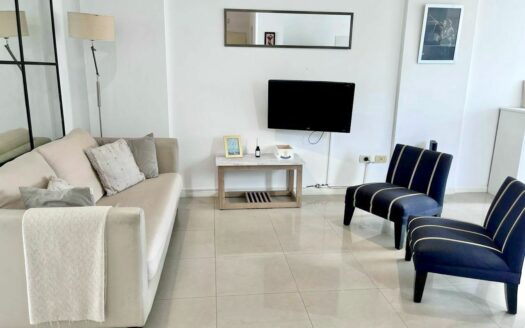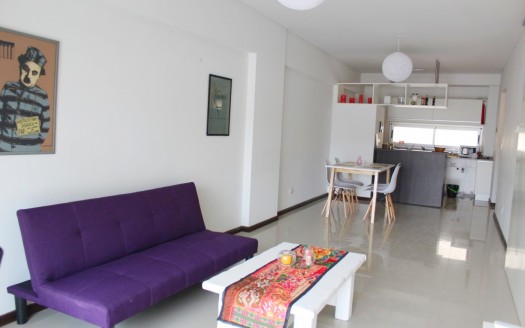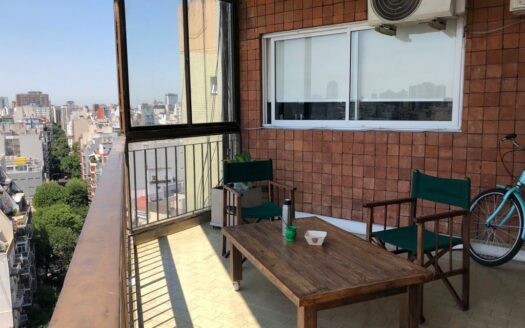Almagro
Properties listed in Almagro
Almagro is one of the most traditional neighborhoods in the City, deeply intertwined with the history of tango and the typical Buenos Aires cafes. Many of the greats of tango circulated through its streets and bars, and it had the privilege of being the first stage that heard Carlos Gardel sing. But beyond its legendary past, Almagro offers a vibrant and multifaceted urban experience.
- Historical and Cultural Heart: The neighborhood is home to important historical landmarks, such as the impressive Basílica de María Auxiliadora y San Carlos, a salesian basilica where Carlos Gardel himself passed through. The legacy of tango’s most famous voice is honored at the Museo Casa Carlos Gardel, located in what was once his home. For a taste of classic Buenos Aires, the iconic Café de los Angelitos or the breathtaking Las Violetas, a “notable cafe” founded in 1884, are essential stops.
- A Culinary Journey: Almagro’s culinary scene is a blend of traditional and new. You can find authentic “bodegones” serving giant milanesas at places like Don Ignacio or enjoy a classic Argentine pizza at the landmark pizzeria Pin-Pun. The area also features an array of specialty cafes, offering a perfect spot to relax and people-watch.
- Art and Creativity: The artistic soul of Almagro is evident in its street art. The walls of the neighborhood are adorned with striking murals and graffiti, many of which pay homage to tango and its legends. The neighborhood is a canvas for artists, adding a modern, bohemian layer to its historical character.
- Parks and Green Spaces: While a predominantly residential neighborhood, Almagro offers excellent green spaces for leisure and recreation. The expansive Parque Centenario serves as a major hub, featuring a large lake, an amphitheater, and a popular craft fair on weekends. It’s a perfect place for a jog, a picnic, or simply enjoying a sunny day.
- Connectivity and Neighbors: Almagro is exceptionally well-connected to the rest of the city. With a dense network of bus lines (“colectivos”) and easy access to both Subte Line A and Line B, residents can travel anywhere in Buenos Aires with ease. This connectivity makes it a great starting point for exploring neighboring areas such as Caballito, Palermo, Boedo, and Villa Crespo, each with its own unique charm.
Length
- Length
- Daily
- Half-yearly
- Monthly
- Weekly
Categories
- Categories
- 1 Bedroom
- 2 Bedrooms
- 3 Bedrooms
- 4 Bedrooms
- 5 Bedrooms
- 6 Bedrooms
- Corporate
- Luxury Apartments
- Properties On SALE
- Studios
- Vacation Rentals
States
- States
- Argentina
Cities
- Cities
- Buenos Aires
- - San Isidro
- Ciudad De Buenos Aires
- Nuñez
- Olivos
- Saavedra
- Vicente Lopez
Almagro
- Barrio
- Almagro
- Alto Palermo
- Barrio Norte
- Barrio Parque
- Belgrano
- Belgrano C
- Belgrano R
- Caballito
- Centro
- Chacarita
- Coghlan
- Colegiales
- Jardin Botanico
- La Lucila
- Las Cañitas
- Montserrat
- Nuñez
- Olivos
- Palermo
- Palermo Chico
- Palermo Hollywood
- Palermo Nuevo
- Palermo Soho
- Palermo Viejo
- Puerto Madero
- Recoleta
- Retiro
- Saavedra
- San Isidro
- San Telmo
- Vicente López
- Villa Crespo
- Villa Urquiza
Default
- Price High to Low
- Price Low to High
- Newest first
- Oldest first
- Newest Edited
- Oldest Edited
- Bedrooms High to Low
- Bedrooms Low to high
- Bathrooms High to Low
- Bathrooms Low to high
- Default
Advanced Search.
Latest Listings.
Macchiato Flat 1 BR + Office Apart ... U$S 1,800Palermo Heights – 1.5 BR with... U$S 1,700Sky Clear- Large & delightful ... U$S 2,500BE Newbery Living – Bright 1BR with... U$S 1,050Select Currency.
U$D- U$D
- $
- €
-
Latest from our Blog.
- 7 Days in Buenos Aires 26 September, 2023
- ¿Cómo Equipar Propiedades y Apartamentos Para Alquiler Temporario? 11 October, 2021
- Cost of Living in Buenos Aires Compared to Cities 2021 11 October, 2021
- Everything you need to know about the “Asado Argentino” 13 March, 2020
- The Porteño Lifestyle 11 March, 2020











